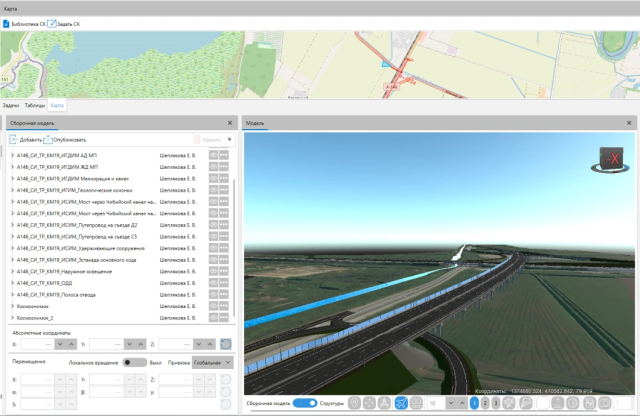BIM technology is an effective tool for monitoring construction progress
 Vladimir Frolov Head of Transport Infrastructure Department, Stroyproekt-INFO LLC
Vladimir Frolov Head of Transport Infrastructure Department, Stroyproekt-INFO LLC
Today in the construction industry it is not surprising to talk about BIM. The capabilities of this technology encourage participants in investment activities to use it in practice to solve various problems.
The prospects for implementing BIM technology in Russia are growing every year. Thanks to the expansion of the relevant regulatory framework, the legal framework and requirements for the generated information models have been developed. Manufacturers of software for the needs of transport construction create the necessary tools that allow you to work with large-scale transport infrastructure facilities. The S-INFO company has developed the S-INFO BIM platform, focused on large linearly extended objects and designed for collecting, analyzing and managing information at all stages of their life cycle. Thus, an information model of the Eastern exit project from the city of Ufa is currently being assembled to solve the problem of monitoring the progress of construction.
The main goals of using information modeling technology in this project
The following goals were identified in this project:
- Visualization and access to information in multi-user mode;
- Recording of information about actual work performed;
- Recording information about accepted work;
- Recording information about paid work;
- Recording data on comments on prescriptions;
- Execution of the work production schedule.
Thus, the main purpose of using a BIM model on site is to monitor the progress of work.

BIM model structure
The primary task when assembling a consolidated BIM model of an object is the organization of its structure. To ensure convenient access to information, it is necessary to present data in a form understandable to the user. In this project, the model database structure is based on the contract bill of works. Work on the construction of any structural element is correlated with the corresponding elements of the information model. The level of development of the information model (or, in other words, the breakdown into elements) is determined by the technical specifications for the preparation of the BIM model. Thus, the work bill became the basis of the model database structure.
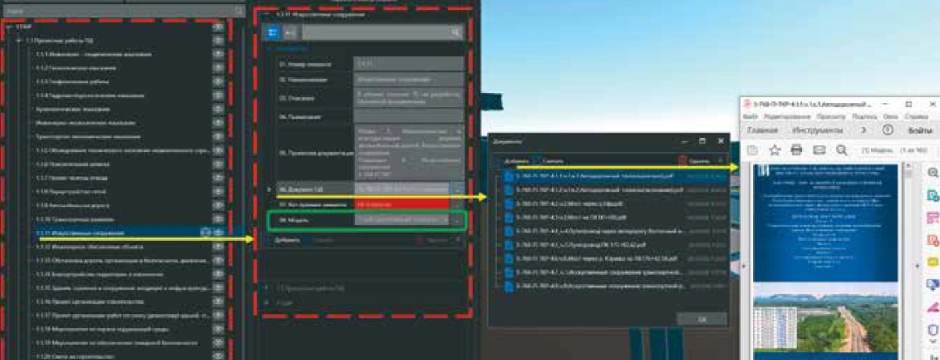
A separate part of the model structure includes a section on the release of project documentation. This made it possible to collect an archive of documentation and provide access to it directly from the model. In Fig. 2, the left red outline shows what the project structure created according to the contract sheet looks like in the S-INFO PC. The right red outline highlights the attributes area of the structure element currently selected. It can be seen that the path from the structure through the attributes window leads to documentation files.
The archive is also linked to works from sections on the construction of the corresponding structural element, which can be accessed by clicking on the button surrounded by a green frame.
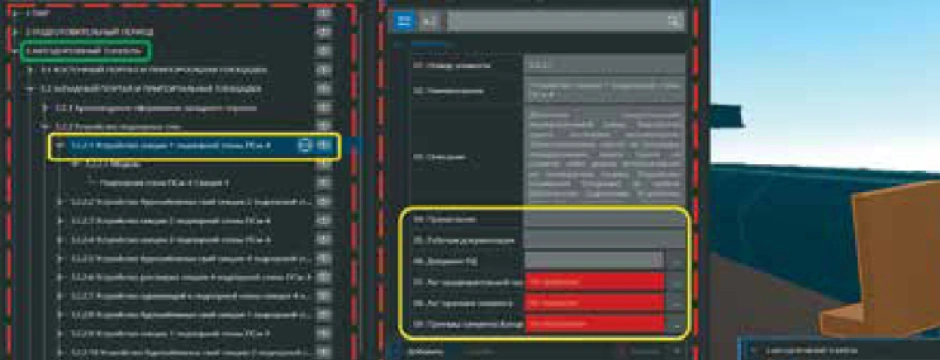
Sections of the statement for the construction of structural elements contain work, the status of which must be monitored; For this purpose, attributes have been added to each type of work, reflecting the current status of the element (Figure 3).
The attributes window allows you, without going through the model structure, to access documents and files attached in higher (parent) sections of the structure in one click.
Access to the information
Thanks to the client-server architecture, the S-INFO software package provides access to data in multi-user mode through a desktop application, web browser or mobile client. Access to data is possible through direct selection of an element in the model window, selection of the corresponding element in the structure, or a developed search system.
The search can be carried out both by the project structure tree and by the attributes of model elements, including files attached to the elements (documents, photos, etc.).
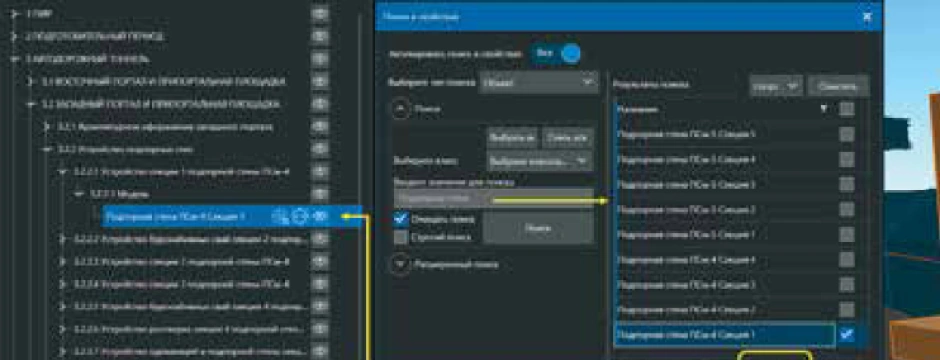
When searching by attribute, the system displays a list of elements whose attributes match the search query (Fig. 4). This also includes searching for files attached to structure elements. In this case, the search occurs by file names.
Construction progress monitoring
PC "S-INFO" allows you to create and configure groups of lists, assigning a color attribute to each of its elements. This functionality makes it possible to search for elements corresponding to a particular status, as well as perform a visual analysis of the state of the entire object according to a selected group of statuses (lists), which in turn helps to visually assess the progress of work.
The search can be carried out both by the project structure tree and by the attributes of model elements, including files attached to the elements (documents, photos, etc.).
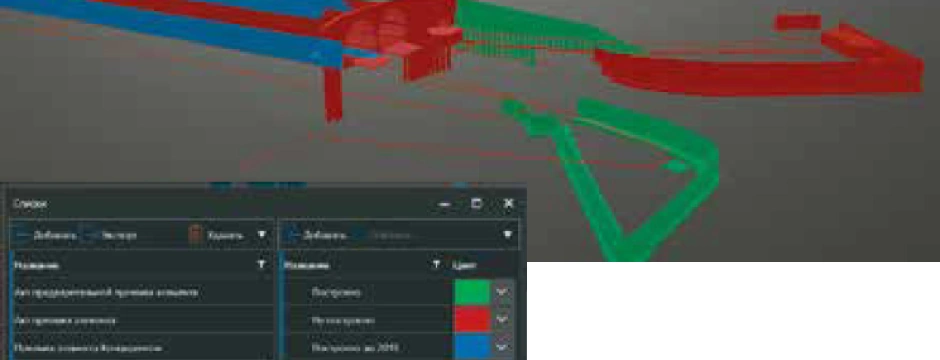
For example, on this project, to track the actual completion of work, three status options are provided (Figure 5):
- Built - green;
- Unbuilt - in red;
- Built before 2018 - blue;
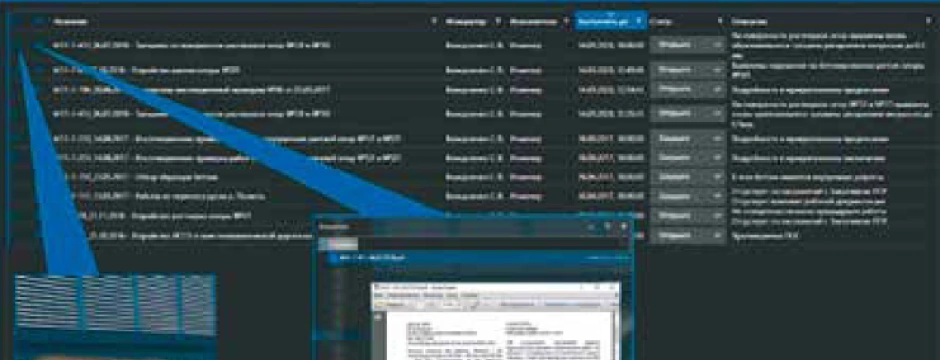
To take into account comments on issued instructions, the corresponding functionality of the S-INFO PC is used, which allows you to maintain a register of instructions. Each entry in this registry contains a specific set of attributes; a corresponding element of the model can be associated with this record, and the necessary documents can be attached to it (Figure 6).
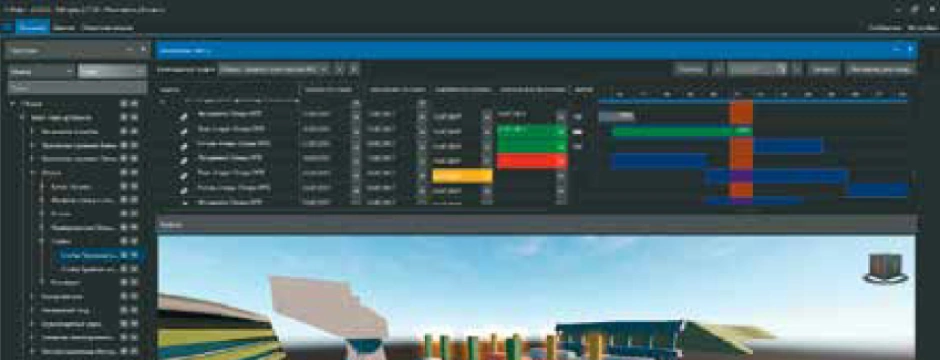
Monitoring the execution of the work schedule
Linking the calendar schedule with model elements allows you to perform a plan-factual analysis of the construction progress, visually track which works started late, which are behind schedule (late in completion), and which are being completed on time. When using this tool of the S-INFO software package, the model elements are colored in accordance with the specified color differentiation (Figure 7).
Results
To use the full potential of BIM in the construction of transport infrastructure, it is necessary to go a long way, implement more than one project, and gain a lot of experience. This experience will show the most convenient forms of interaction between process participants, determine the necessary and sufficient requirements for information content and geometric elaboration of the elements of the BIM model.
However, we can already say that the use of building information modeling technology in construction (including for monitoring the progress of work, ensuring access to information for all participants) will increase the efficiency of transferring data on the current state of the object, which in turn will reduce the time for decision-making relevant management services.
In addition to achieving the goals that we set for the current project, we are laying the foundation for the successful and high-quality implementation of work with the BIM model in future projects.
We are always happy to share our experience so that, together with our colleagues, we can jointly develop information modeling technology on construction projects in Russia.
 Vladimir Frolov Head of Transport Infrastructure Department, Stroyproekt-INFO LLC
Vladimir Frolov Head of Transport Infrastructure Department, Stroyproekt-INFO LLC



